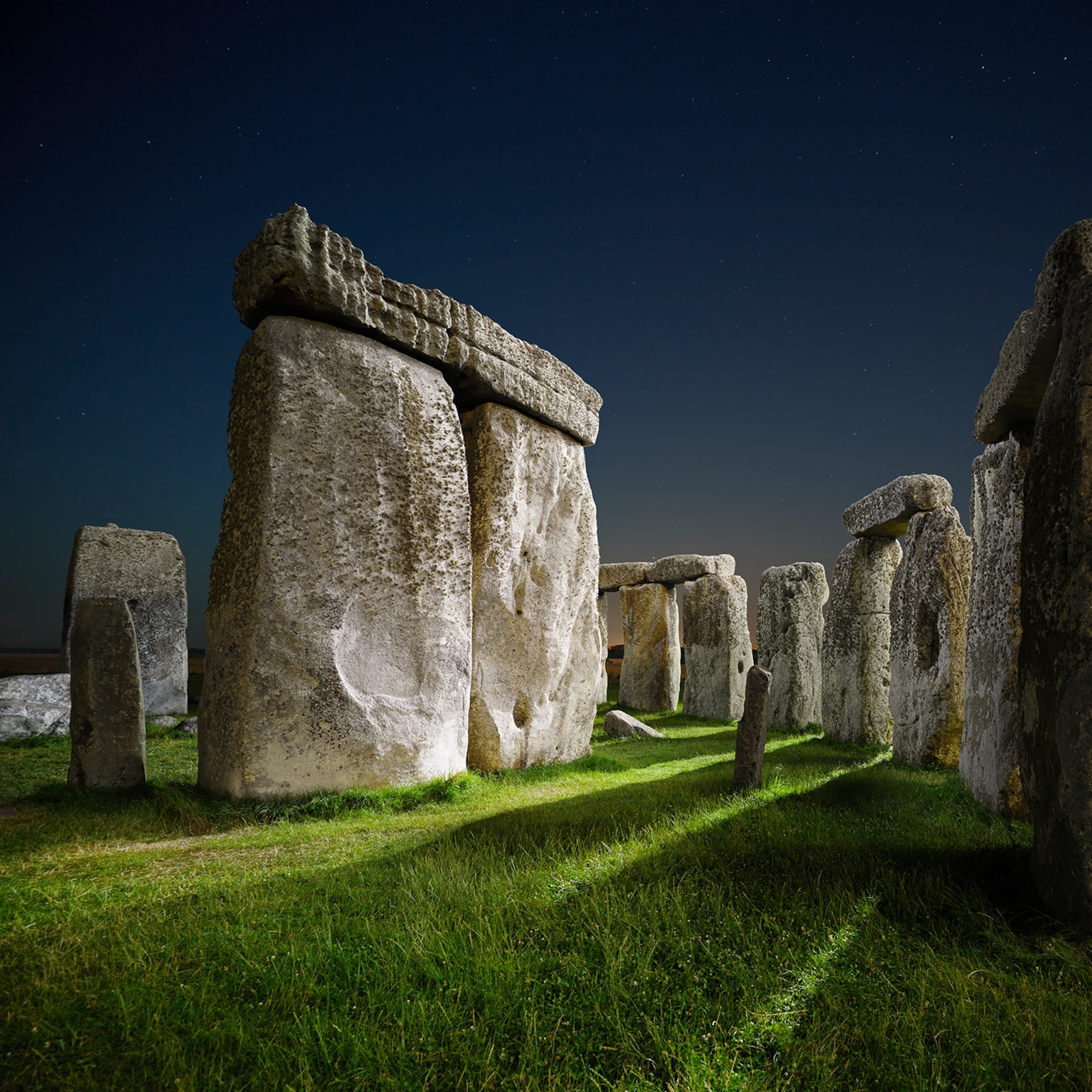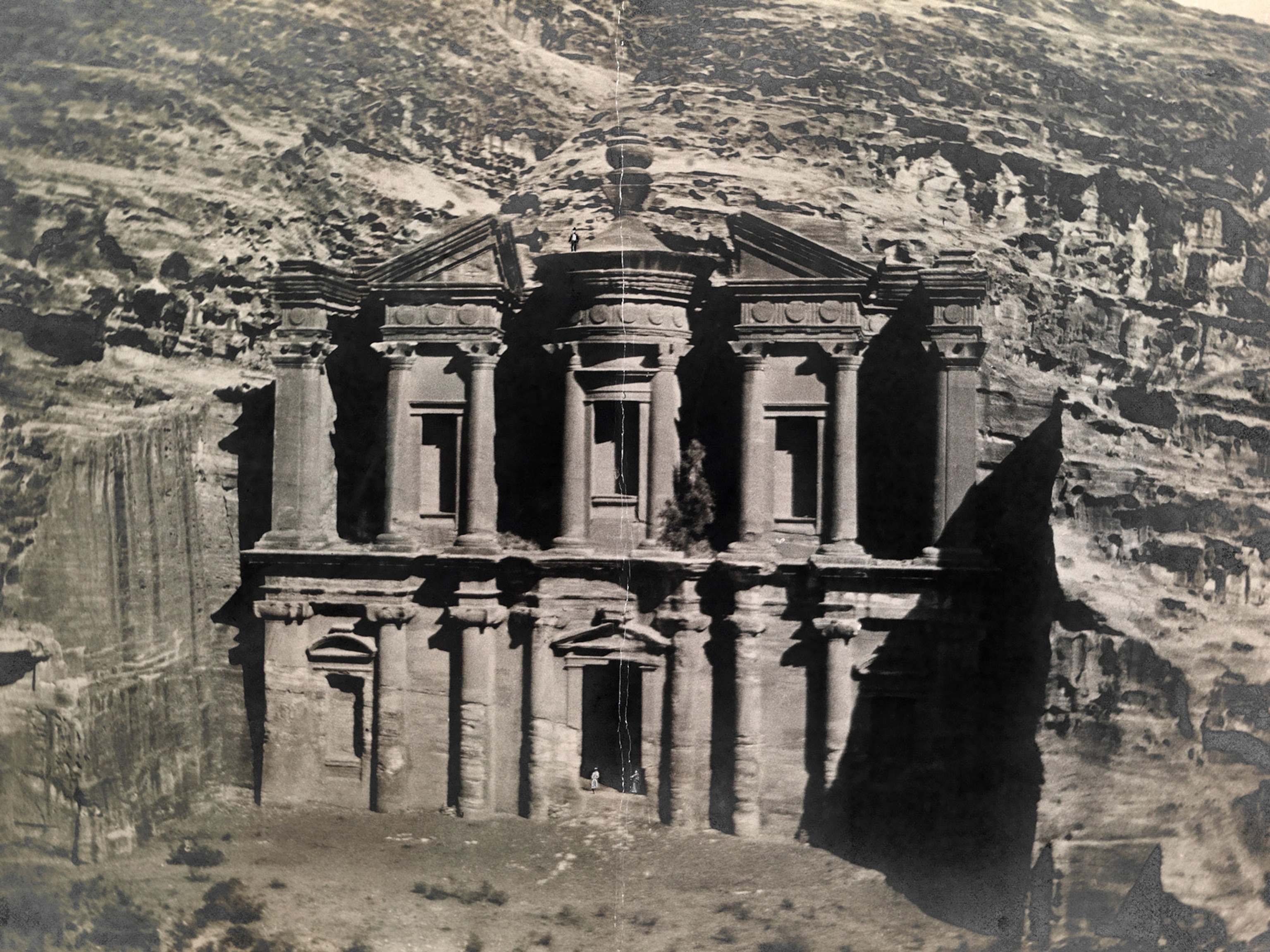
We know where the 7 wonders of the ancient world are—except for one
The true location of the Hanging Gardens of Babylon remains an unsolved mystery, but the latest research suggests looking in a different place.
Around 225 B.C. a Greek engineer, Philo, produced a list of seven temata—“things to be seen”—that are better known today as the Seven Wonders of the Ancient World: the Pyramids at Giza; the Statue of Zeus at Olympia; the Temple of Artemis at Ephesus; the Mausoleum at Halicarnassus; the Colossus of Rhodes; the Pharos of Alexandria; and, most mysterious of all, the Hanging Gardens of Babylon.
Many revisions of Philo’s list followed, and other sites were added and removed according to the tastes of the times. But the Philo seven have become canonical, a snapshot of the monuments whose size and engineering prowess awed the classical mind. Only the Pyramids at Giza (built in the mid-third millennium B.C.) remains intact today. Although five of the others have disappeared, or are in ruins, enough documentary and archaeological evidence is available to confirm that they once stood proud, and are not the product of hearsay or legend.

However, the Hanging Gardens of Babylon, held by tradition to be the work of Babylon’s mighty King Nebuchadrezzar II (r. 605-561 B.C.), is the list’s great enigma. No clue of such gardens has come to light in ruins, or in any reference in Babylonian sources. The hunt for the gardens is one of the most tantalizing quests in Mesopotamian scholarship, and archaeologists are still puzzling out where such gardens may have been located in Babylon, or what was so special about them. They are still debating what the term “hanging” might mean, what they might have looked like, how they were irrigated—in short, whether they even existed at all.
(Related: 32,000-Year-Old Plant Brought Back to Life—Oldest Yet)
The elusive gardens
Apart from Babylon, all the monuments on Philo’s bucket list lie in or near the eastern Mediterranean, well within the Hellenist sphere of influence. The Hanging Gardens, however, are an eastern outlier, “a long journey to the land of the Persians on the far side of the Euphrates.”
When Philo wrote those words, Babylon, and the Persians, had been subdued a century before, by Alexander the Great, who had died in Babylon in 323 B.C. Despite the expansion of Greek culture eastward into Central Asia with Alexander’s armies, Babylon and its famed monuments would have struck Philo’s readers as highly exotic and remote. (Discover the true story of Semiramis, the legendary queen of Babylon.)
The ingenious Hanging Gardens, Philo writes, were laid out on a large platform of palm beams raised up on stone columns. This trellis of palm beams was covered with a thick layer of soil and planted with all kinds of trees and flowers, a “labor of cultivation suspended above the heads of the spectators.”
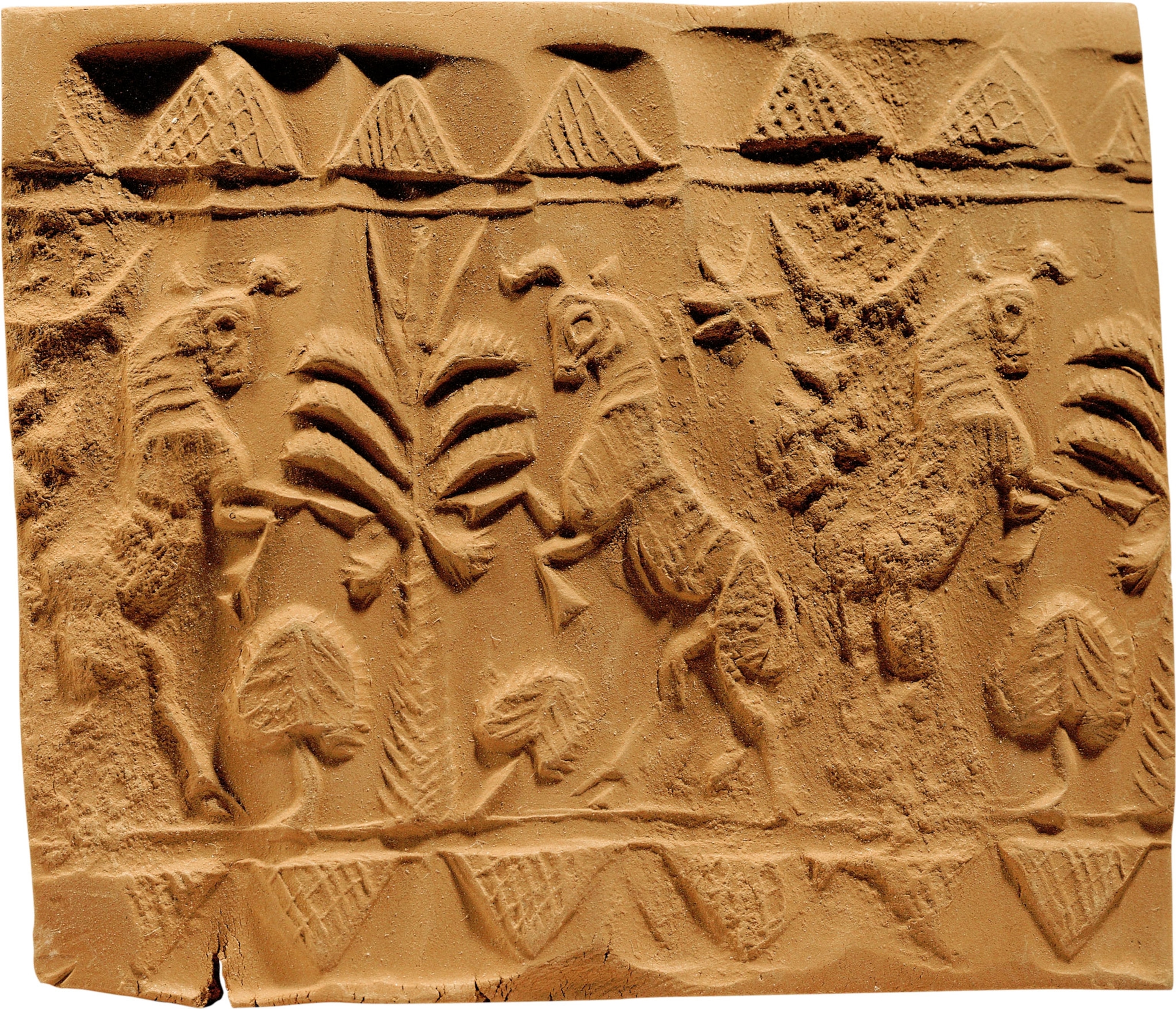
Aside from its hanging appearance, the gardens’ wondrous nature lay, according to Philo, partly in their variety: “All kinds of flowers, whatever is the most delightful, agreeable and pleasant to the eyes, is there.” Their system of irrigation also inspired wonder: “Water, collected on high in numerous ample containers, reaches the whole garden.”
Historians can draw on a wealth of later classical writers who reference the gardens. The first-century B.C. geographer Strabo and historian Diodorus Siculus both described the gardens as a “wonder.” Diodorus, a Greek author from Sicily, left one of the most detailed descriptions of the gardens as part of his monumental 40-volume history of the world, Bibliotheca historica. Like Philo, he detailed an elaborate system of supporting “beams”: These consisted of “a layer of reeds laid in great quantities of bitumen. Over this is laid two courses of baked brick, bonded by cement and as a third layer a covering of lead, to the end that the moisture from the soil might not penetrate beneath.” These layers, according to Diodorus, rose in ascending tiers. They were “thickly planted with trees of every kind that, by their great size or other charm, could give pleasure to the beholder,” and were irrigated “by machines raising the water in great abundance from the river.” (Babylon was the jewel of the ancient world.)

Earliest accounts
After much puzzling over Philo’s, Diodorus’s, and other first-century B.C. accounts of Babylon and its monuments, historians have traced the earliest written sources back to Greek scholars working during and just after the reign of Alexander the Great. Diodorus and Strabo, for example, both drew on accounts of Babylon from fourth-century B.C. writers such as Callisthenes, Alexander’s court historian and great-nephew of the philosopher Aristotle. Scholars believe that the passage in Diodorus’s Bibliotheca historica that describes the Hanging Gardens is derived from a work by a biographer of Alexander the Great, Cleitarchus, who was writing in the late fourth century B.C. His work has not survived but is known through allusions by other authors. The biography was a colorful and gossipy account of Alexander’s age.

Another important source of information on the gardens was written by a Babylonian priest named Berossus who lived in the early third century B.C. (soon after the time of Cleitarchus, and several decades before Philo). Judging by other accounts of his lost writings, Berossus seems to have introduced details about the gardens that inspired artists for centuries afterward, writing of high stone terraces lined with trees and flowers. Berossus also wrote that King Nebuchadrezzar II constructed the gardens in Babylon in honor of his wife, Amytis of Media, who longed for the lush mountain landscape of her native Persia. (Under king Cyrus the Great, Persia became the world's first true empire.)
This romantic story has helped fix the gardens in the popular imagination. But historians are faced with a problem: All sources that reference a Babylonian garden remarkable for being suspended or tiered date from the fourth century B.C. at the earliest. The Greek historian Herodotus, writing in the fifth century B.C.— only a century after the time of Nebuchadrezzar—makes no mention of these remarkable gardens when describing Babylon in his Histories. Further dashing hopes that documentary evidence would shed light on the gardens, the texts that have been discovered from the time of Nebuchadrezzar’s reign contain no mention at all of any elevated gardens in the city.
Monumental confusion
The first-century A.D. Roman Jewish historian Josephus wrote that the gardens lay within Babylon’s main palace. During the first excavations of the ruins of Babylon, directed by the German archaeologist Robert Koldewey between 1899 and 1917, a robust, arched structure was unearthed in the northeast corner of the Southern Palace.
Koldewey believed that this was the very structure that had supported the famous gardens. It was made of carved stone, making it more resistant to moisture than mud brick. Its extremely thick walls would have been perfect for supporting the heavy superstructure. In addition, there was evidence of wells, which Koldewey assumed had formed part of the gardens’ irrigation system.

Today, however, most scholars agree that the building was probably a warehouse. Several storage jars were excavated from the site, but the strongest evidence is a cuneiform tablet unearthed there that dates to the time of Nebuchadrezzar II. The record contains details about the distribution of sesame oil, grain, dates, spices, and high-ranking captives. (This is how Koldewey and his team uncovered Nebuchadrezzar II's vibrant Ishtar Gate.)
Koldewey’s excavation is most famous for revealing the foundations of a wondrous structure that really did exist: Babylon’s ziggurat, or stepped tower. A decade later, while British archaeologist Leonard Woolley was excavating the ancient Sumerian city of Ur to the southeast of Babylon, he noted regularly spaced holes in the brickwork of the ziggurat there. Might these be evidence of some kind of drainage or irrigation system supplying gardens rising up the face of the Ziggurat of Ur? Perhaps this kind of system, Woolley speculated, was later used to design the Hanging Gardens in Babylon. (Agatha Christie mended a broken heart through archaeology in Mesopotamia.)
Spurred, perhaps, by the lively public interest such a theory would awaken, Woolley embraced the theory. But archaeologists largely agree that his sober, initial assessment was correct: The holes were bored to enable the even drying of the brickwork during its construction.
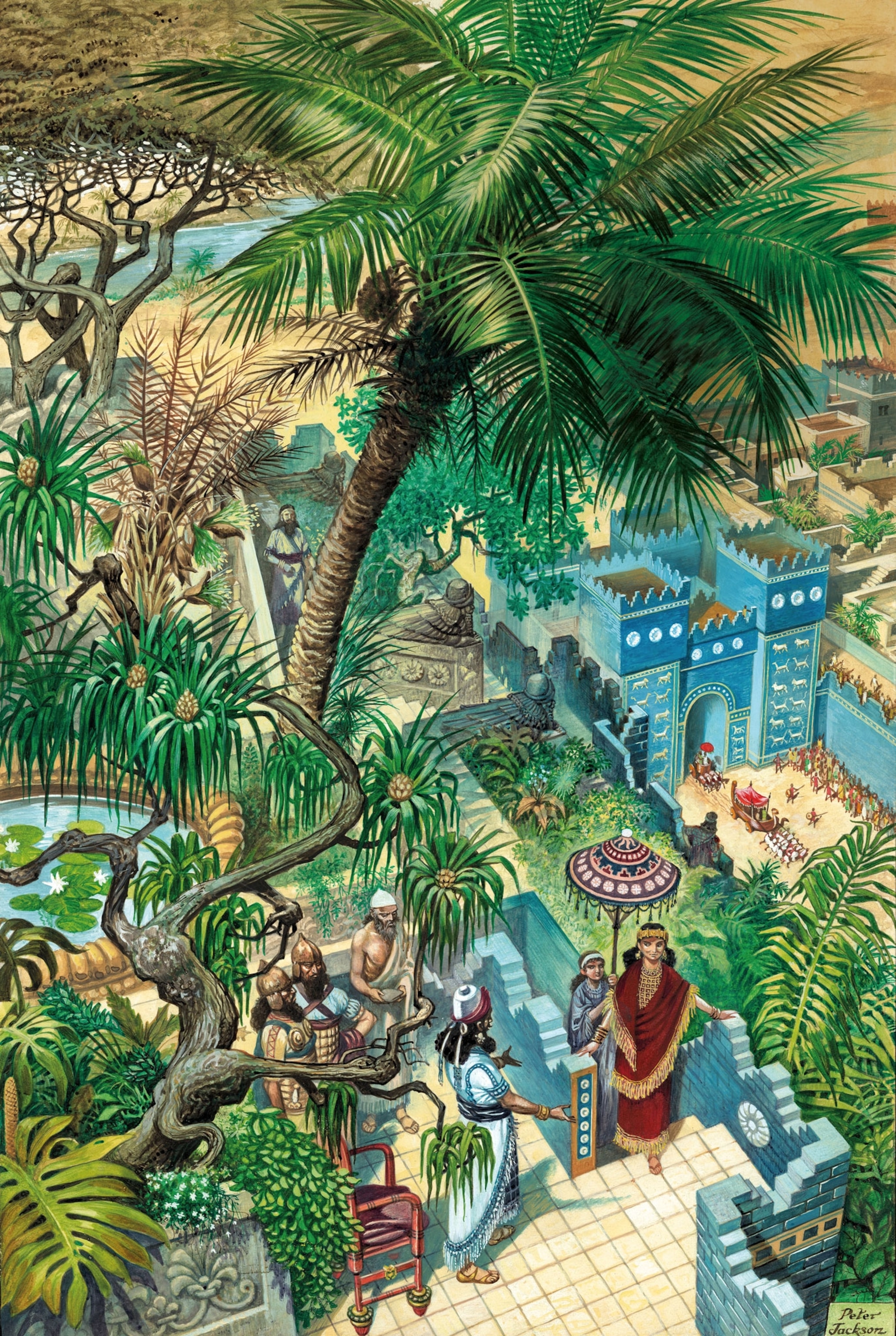
Faced with this lack of documentary and archaeological evidence, some experts have opted for a radical reframing of the quest for the Hanging Gardens: What if they were not in Babylon at all? This wonder of the world could well be located in another city entirely.
This hypothesis is not as radical as it may appear at first: Greco-Roman sources that reference the Hanging Gardens tended to present historical detail interwoven with myth and legend, and their recounting of the history of great Mesopotamian civilizations often confused Assyria and Babylonia. Diodorus, for example, places Nineveh, the capital of the Assyrian Empire, next to the Euphrates, although in fact the city stood on the banks of the Tigris.
In another passage Diodorus describes the walls of Babylon, detailing its rich depiction of animals, hunted by “Queen Semiramis on horseback in the act of hurling a javelin at a leopard, and nearby her husband Ninus, in the act of thrusting his spear into a lion.” No such hunting scene has been found in Babylon. It does, however, correspond closely with neo-Assyrian hunting reliefs engraved on the stone walls of the Northern Palace in Nineveh.
The Hanging Gardens of Nineveh?
Following a recent investigation, Oxford University Assyriologist Stephanie Dalley has argued that the Hanging Gardens were not built by King Nebuchadrezzar II in Babylon at all, but in Nineveh by the Assyrian ruler Sennacherib (r. 704-681 B.C.). Her thesis relies on the annals of his reign, which have been found inscribed on prism-shaped stones. In one the king boasts of the extensive monument-building he undertook: “I raised the height of the surroundings of the palace to be a Wonder for all peoples . . . A high garden imitating the Amanus mountains I laid out next to it with all kinds of aromatic plants.”
With its reference to wonder and height, the passage echoes many of the key aspects attributed to the Hanging Gardens. Just as classical writers referred to Babylon’s king imitating the landscape of Persia, Sennacherib’s annals detail the gardens’ imitation of Mount Amanus, a range in the extreme south of modern-day Turkey.
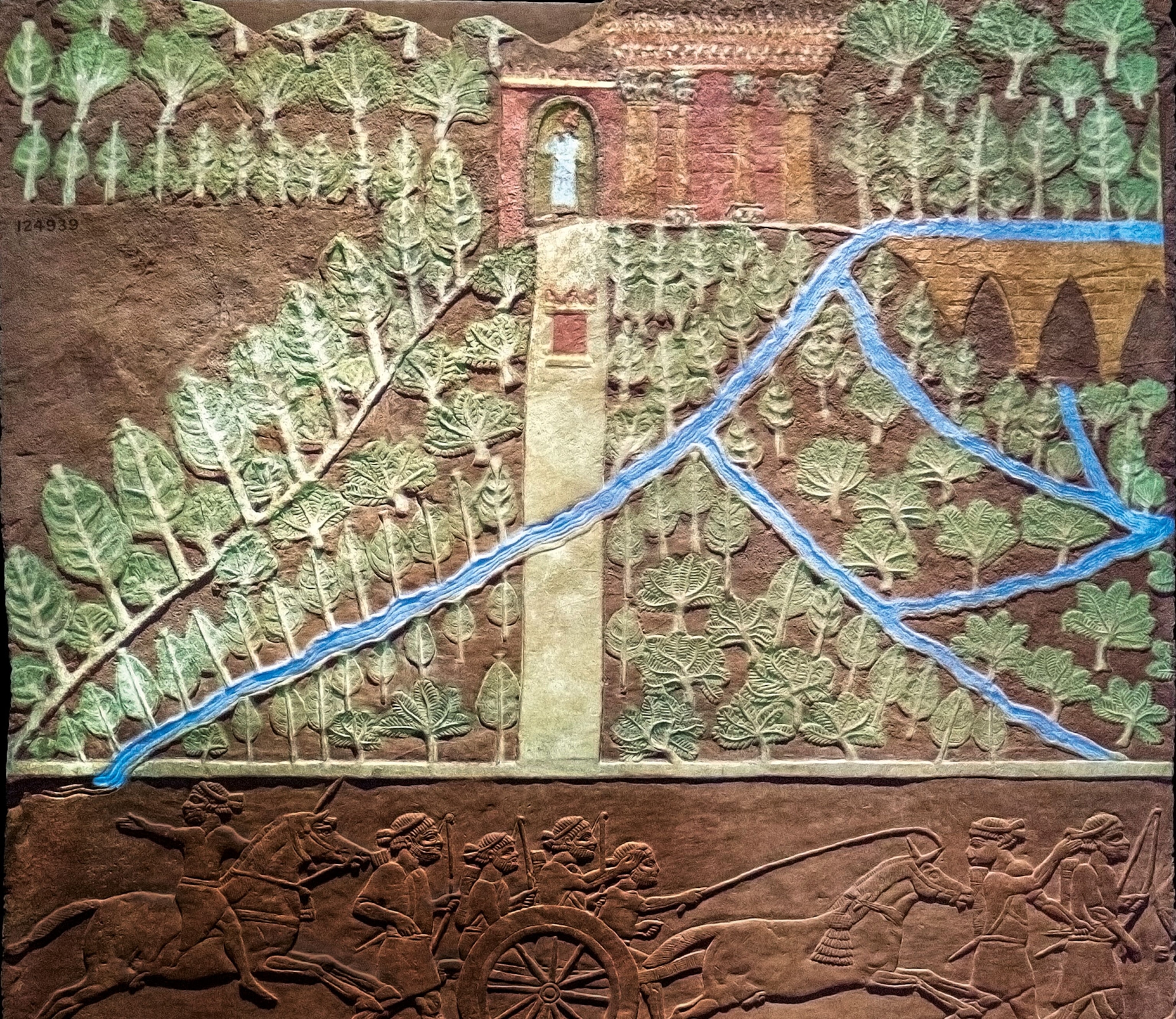
A relief from the time of Sennacherib’s grandson, Ashurbanipal (r. 668-627 B.C.), depicts gardens with trees distributed across a slope topped by a pavilion. Water flows from an aqueduct to feed a series of channels filled with fish. The theory that this Ninevan pleasure park could well have been the famed Hanging Gardens is bolstered further by Sennacherib’s reputation for engineering innovation. He declared himself to be of “clever understanding.” The archives of his reign abound with references to ingenious irrigation systems, and some historians credit him with the invention of the Archimedes water screw. Archaeologists have also found an aqueduct system, built during his reign from two million blocks of stone, that brought water to the city across the Jerwan valley. (See "extremely rare" Assyrian reliefs discovered in a canal system near ancient Nineveh.)

The Jerwan structure lies on the route to Alexander the Great’s decisive battle with the Persians, at Gaugamela, in 331 B.C. Dalley argues that it is likely Alexander saw the aqueduct as he passed Nineveh. His inquiries into the sophisticated water systems and gardens of that city seeded the story of the Hanging Gardens, which scholarly confusion then misattributed to Babylon. If the theory is true, it would solve a great archaeological mystery, and leave few in doubt that the Hanging Gardens of Nineveh were a wonder indeed.



